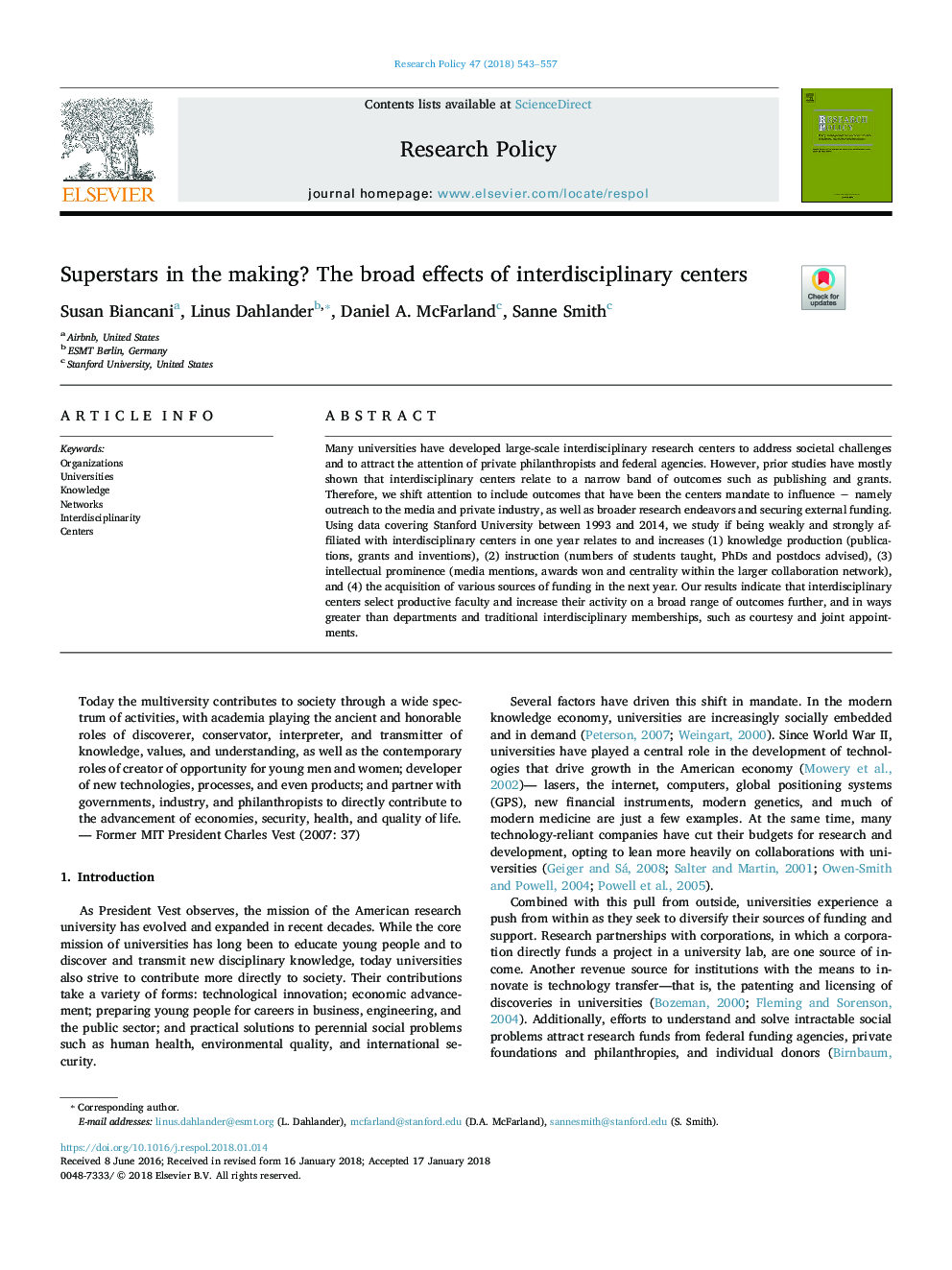| Article ID | Journal | Published Year | Pages | File Type |
|---|---|---|---|---|
| 7384480 | Research Policy | 2018 | 15 Pages |
Abstract
Many universities have developed large-scale interdisciplinary research centers to address societal challenges and to attract the attention of private philanthropists and federal agencies. However, prior studies have mostly shown that interdisciplinary centers relate to a narrow band of outcomes such as publishing and grants. Therefore, we shift attention to include outcomes that have been the centers mandate to influence â namely outreach to the media and private industry, as well as broader research endeavors and securing external funding. Using data covering Stanford University between 1993 and 2014, we study if being weakly and strongly affiliated with interdisciplinary centers in one year relates to and increases (1) knowledge production (publications, grants and inventions), (2) instruction (numbers of students taught, PhDs and postdocs advised), (3) intellectual prominence (media mentions, awards won and centrality within the larger collaboration network), and (4) the acquisition of various sources of funding in the next year. Our results indicate that interdisciplinary centers select productive faculty and increase their activity on a broad range of outcomes further, and in ways greater than departments and traditional interdisciplinary memberships, such as courtesy and joint appointments.
Related Topics
Social Sciences and Humanities
Business, Management and Accounting
Business and International Management
Authors
Susan Biancani, Linus Dahlander, Daniel A. McFarland, Sanne Smith,
